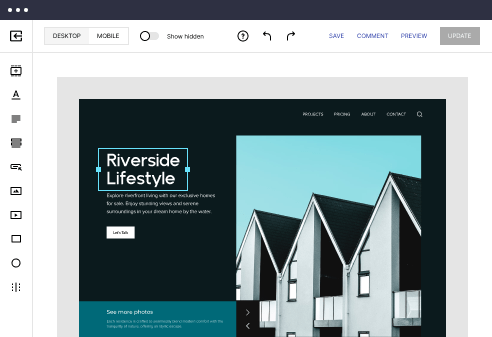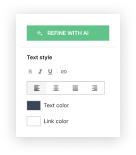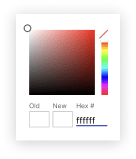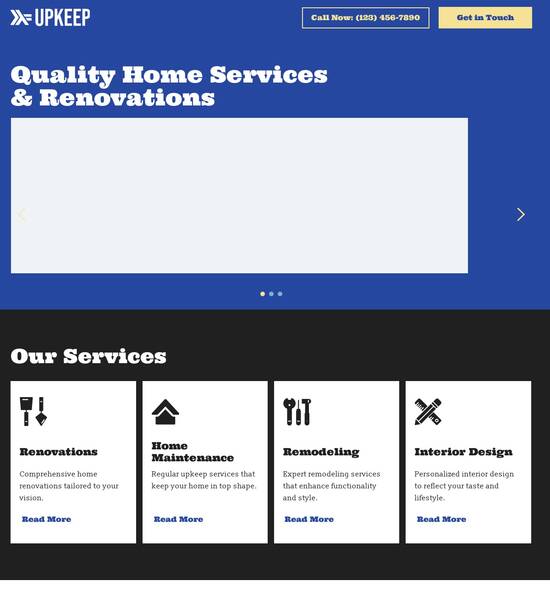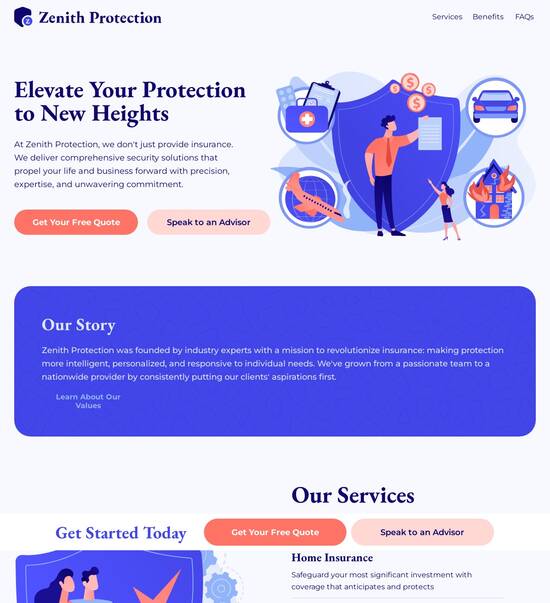
HTML5 optimized settings page template
Explore Similar TemplatesAbout template
Supercharge your settings page with HTML5 for outstanding performance! Learn more today.
Recommended templates
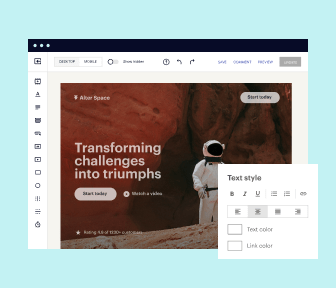
Easy to build without coding
With the intuitive drag-and-drop builder, anyone on your team can create high-converting pages without any knowledge of code or design. Make enhancements to your landing page with custom widgets using Javascript, HTML/CSS, or third-party scripts.
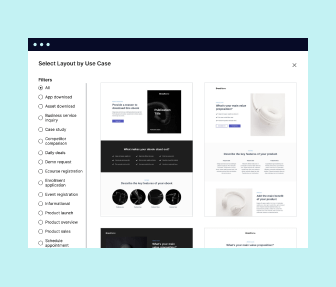
Multiple layouts for any industry and goal
Select from 500+ landing page layouts built to boost conversions across industry-specific scenarios. Customize them by adjusting fonts, adding images, and generating on-brand content with the AI assistant. Quickly scale with Instablocks® and Global Blocks that you can save, reuse, and update globally.

Loads fast and looks polished on any device
Every template is responsive, which means they present professionally on any device and load blazingly fast with our Thor Render Engine. You can also power them up with Google AMP technology to deliver an unparalleled mobile experience and drive higher conversions.
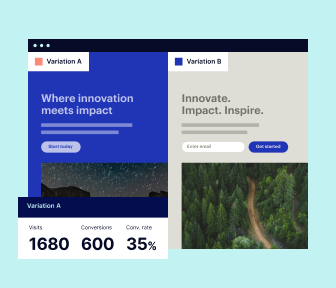
Robust analytics & experimentation
Get real-time updates and reporting across all your devices, showing the number of visitors, conversions, cost-per-visitor, and cost-per-lead. Launch AI-powered experiments, run A/B tests, and use heatmaps to analyze user behavior, then optimize your landing page to maximize conversions.
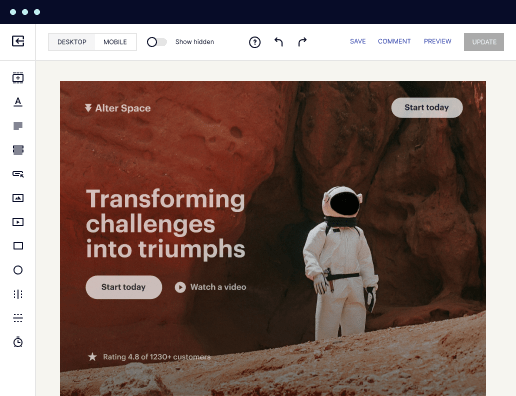
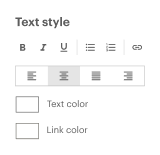
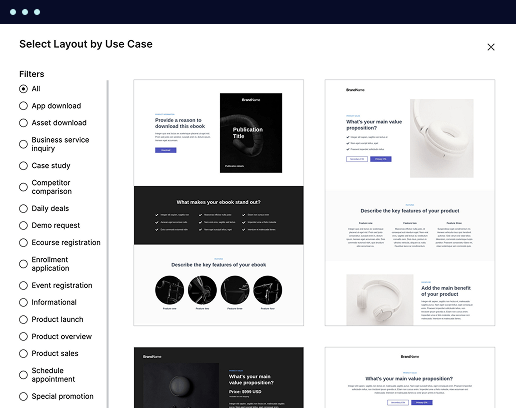

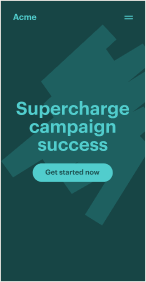
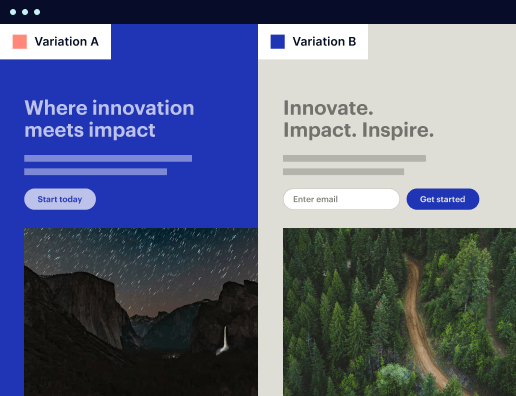
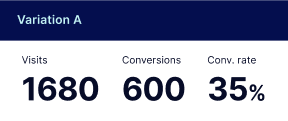
Easy to build without coding
With the intuitive drag-and-drop builder, anyone on your team can create high-converting pages without any knowledge of code or design. Make enhancements to your landing page with custom widgets using Javascript, HTML/CSS, or third-party scripts.
Multiple layouts for any industry and goal
Select from 500+ landing page layouts built to boost conversions across industry-specific scenarios. Customize them by adjusting fonts, adding images, and generating on-brand content with the AI assistant. Quickly scale with Instablocks® and Global Blocks that you can save, reuse, and update globally.
Loads fast and looks polished on any device
Every template is responsive, which means they present professionally on any device and load blazingly fast with our Thor Render Engine.
Robust analytics & experimentation
Get real-time updates and reporting across all your devices, showing the number of visitors, conversions, cost-per-visitor, and cost-per-lead. Launch AI-powered experiments, run A/B tests, and use heatmaps to analyze user behavior, then optimize your landing page to maximize conversions.
All the features you need to build lead-generating landing pages
Explore more featuresLearn how to build top-performing landing pages for any goal
FAQs
Leading the way in building high-performing landing pages





A comprehensive guide to landing page optimization with Instapage
Landing page optimization is crucial for marketers seeking to maximize ROI from their digital campaigns. Instapage offers a versatile platform that simplifies the creation and management of high-converting landing pages tailored to specific audience segments within various industries including business services, tech, education, and more. This guide will walk you through the essential steps to effectively utilize Instapage and enhance overall campaign performance.
Understanding the power of Instapage
Instapage is not just a landing page builder; it is an all-in-one conversion rate optimization (CRO) tool that empowers marketers through a variety of features designed for efficiency and effectiveness. One of its key strengths lies in its extensive collection of over 100 customizable templates, coupled with lead generation elements. This allows marketers to quickly create pages that resonate with their target audience without needing extensive technical knowledge.
- User-friendly interface: Instapage offers an intuitive drag-and-drop builder, making it easy for anyone to create beautiful landing pages.
- Extensive template library: Choose from hundreds of pre-designed templates that suit various industries and campaigns.
- Lead generation tools: Use built-in forms and integrations to effectively collect and manage leads directly from your landing page.
Step 1: Crafting your landing page
To get started with your landing page, follow these detailed steps to ensure you leverage Instapage's capabilities effectively:
- Choose the right template: Start with one of the 100+ conversion-focused templates that align with the goals of your marketing strategy.
- Customize elements: Use the drag-and-drop functionality to modify text, images, and forms to fit your branding and message.
- Implement A/B testing: Take advantage of Instapage's built-in experimentation features to compare different versions of your page and learn what resonates most with your audience.
Step 2: Optimize for conversions
Once your landing page is built, it's critical to optimize it for the highest possible conversion rates.
- Use heatmaps: Analyze visitor interactions on your page using heatmaps to understand where users are clicking and how they navigate.
- Dynamic content personalization: Customize page elements based on user behavior and preference to provide a personalized experience.
- Monitor key metrics: Utilize Instapage's analytics dashboard to track performance indicators such as bounce rate and conversion rate.
Step 3: Enhance collaboration and feedback
Collaboration within teams is vital for effective landing page development. Here’s how you can streamline this process using Instapage:
- Real-time editing: Collaborate with team members in real-time to make necessary adjustments on the landing page content.
- Instant feedback loops: Use comments and annotations to provide feedback on design and messaging directly within the platform.
- Secure sharing: Share pages securely with external stakeholders for review and approval without compromising your data.
By following these steps, marketers can create, optimize, and collaborate on high-performing landing pages that drive significant results.
Ready to boost your marketing campaigns? Start using Instapage today to create stunning landing pages that convert visitors into leads.
People also ask about HTML5 optimized settings page template
HTML5 Optimized Settings Page Template
Understanding the need for an HTML5 settings page template
Settings pages play a crucial role in modern web applications, providing users with the capability to customize their experience and manage their preferences. These pages are often the first point of interaction users have when configuring an application to suit their needs. Prioritizing usability in these settings not only improves user satisfaction but also impacts retention rates.
HTML5 serves as the backbone of contemporary web development, providing the tools necessary for building responsive and interactive user experiences. Its semantic elements enhance the structure and accessibility of websites, which is particularly important for settings pages where clarity and efficiency are key.
The intersection of usability and aesthetics becomes evident as designers strive to create visually appealing settings pages that remain functional. A well-designed settings page can influence the overall user journey, making it essential for developers to balance form and function in their designs.
Key features of HTML5 optimized settings page templates
HTML5 optimized settings page templates come equipped with a variety of key features that enhance the user experience. One of the most prominent features is enhanced responsiveness achieved through frameworks like Bootstrap 5, which offers a fluid grid system and responsive utilities. This ensures that settings pages render beautifully across multiple devices and screen sizes.
Fluid grid system for optimal layout on various screens.
Responsive utilities that allow for adaptable designs.
Flexbox and CSS Grid for managing complex layouts easily.
User-friendly interface elements are another hallmark feature. Intuitive navigation menus, well-structured sections, and interactive elements like dropdowns, toggles, and sliders create an engaging experience for users as they manage their preferences.
Additionally, customizable dashboard templates provide users with options for personalizing their settings experience. This includes theme color adjustments, font choices, and the integration of pre-built widgets that display key statistics, making data visualization straightforward and informative.
Core components of an HTML5 admin dashboard
An HTML5 admin dashboard is composed of various core components that are essential for effective user interaction. Modular design elements offer tailored solutions for different areas of the application, from sales dashboards that monitor performance to comprehensive data visualization tools. This modularity supports scalability, allowing developers to add features as user needs evolve.
Dashboards tailored for comprehensive data insights.
Sales dashboards that facilitate performance monitoring.
Essential tools also enhance functionality, with the integration of third-party applications to extend capabilities. Tooltips and help modals provide valuable user guidance, reducing frustration and boosting efficiency during user onboarding.
Moreover, security and access controls are integral to safeguarding user data. Implementing role-based access management strategies ensures that sensitive information is protected, while input validation helps prevent potential security vulnerabilities.
Applications in real-world scenarios
HTML5 settings page templates find applications across multiple industries and web platforms. For instance, e-commerce sites benefit from streamlined user settings that allow customers to effectively manage their profiles and preferences, enhancing their shopping experience.
E-commerce sites focusing on user settings management.
SaaS platforms that tailor user experiences and integrations.
Mobile applications that provide seamless settings between desktop and mobile.
In addition, enhancing user experience is crucial, and thoughtful design can significantly impact usability. Key design principles, such as creating a visual hierarchy and applying color psychology, guide users effectively through the settings pages. Feedback mechanisms like success and error messages foster clarity in user actions, allowing them to navigate confidently.
Innovative concepts driving HTML5 template development
As technology evolves, so too does the scope of HTML5 template development. Interactivity is a significant aspect, with features like live previews allowing users to see changes in real-time. Additionally, dynamic loading of settings based on user profiles ensures that customization feels personalized and unique.
Live previews of customization settings enhance user engagement.
Dynamic loading of settings based on individual user profiles.
Performance optimizations stand at the forefront of development priorities as well. Implementing lightweight code and efficient asset management strategies are essential to reducing load times, which is critical for user retention and satisfaction.
Moreover, future-proofing HTML5 templates in line with emerging technologies, such as Progressive Web Apps (PWAs), reinforces their adaptability. Utilizing semantic elements plays a critical role in SEO and accessibility, ensuring the content reaches a broad audience.
Step-by-step guide to implementing an HTML5 optimized settings page
Implementing an HTML5 optimized settings page requires careful planning and execution. Start by planning the layout and structure of the page. Choosing the right dashboard template framework is pivotal; consider options that offer the flexibility to cater to user needs while maintaining a professional appearance.
Select a versatile dashboard template framework.
Define sections based on user interactions and needs.
Moving on to coding essentials, set up the HTML5 boilerplate to create a robust foundation for your page. Implementing Bootstrap 5 components for the dashboard will facilitate the inclusion of responsive layout features and interactive elements, creating a strong user interface.
Finally, testing and debugging are crucial steps. Usability testing helps gather valuable feedback that can inform improvements and enhancements to the functionality of the settings page. Cross-browser compatibility checks will ensure that the settings page delivers a uniform experience across different platforms, enhancing accessibility for all users.
Tools and resources for developers
Numerous tools and resources are available for developers looking to create HTML5 optimized settings page templates. Exploring additional HTML5 frameworks and libraries can aid in finding the most suitable design features. Comparing popular dashboard templates helps developers determine the best fit for their project's unique needs.
Evaluate popular HTML5 dashboard frameworks for features.
Utilize open-source tools for further customization.
In terms of design, tools like Figma and Adobe XD are invaluable for creating visually appealing layouts. Prototyping before full-scale development allows for efficient collaboration and feedback, ensuring a smoother development process.
The evolution of HTML5 in dashboard applications
The journey of HTML5 in dashboard applications reflects a significant transformation in web design and functionality. Historically, web interfaces were largely static but have evolved into impactful, interactive tools that cater to diverse user needs. This progression marks a foundational shift towards dynamic interfaces that actively engage users.
Current trends point toward further integration of AI and machine learning within user settings, providing smarter and more adaptive experiences. Predications suggest that future iterations of HTML5 applications will feature enhanced capabilities, as developers leverage evolving technologies to enrich user interaction and functionality.
Overcoming challenges in dashboard creation
Creating effective dashboards is not without its challenges. Common pitfalls include the misalignment between design and functionality, which can hinder user experience. Simplifying interfaces and ensuring clarity in layout are vital steps to mitigate friction.
Aim for consistency between user interface design and functionality.
Avoid overly complex interfaces that may confuse users.
Effective collaboration among teams is essential for successful dashboard creation. Fostering communication between design and development teams helps bridge gaps that may arise during the process. Implementing iterative feedback loops allows for continuous improvement, ensuring that the final product meets the needs and expectations of users.
Ready to skyrocket conversions?
Supercharge your ad campaigns with high-performing landing pages
Get started